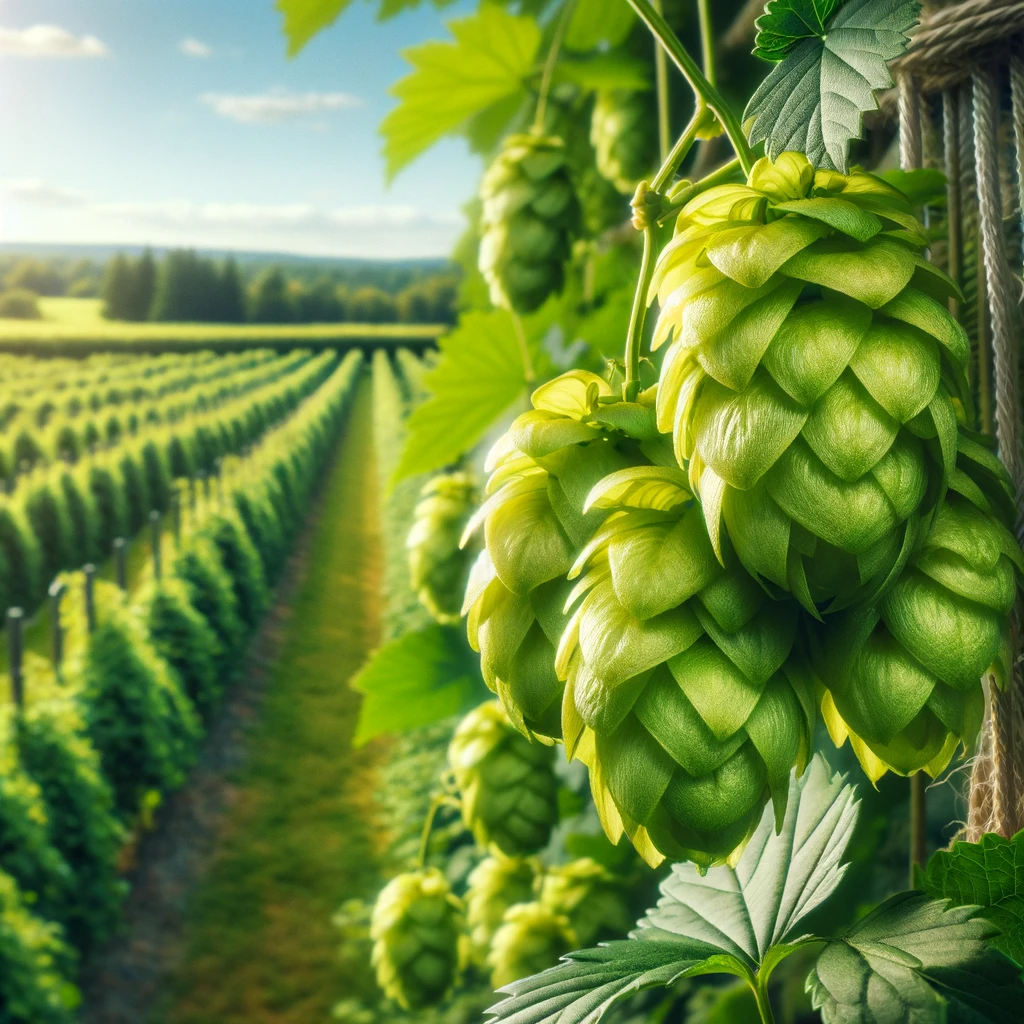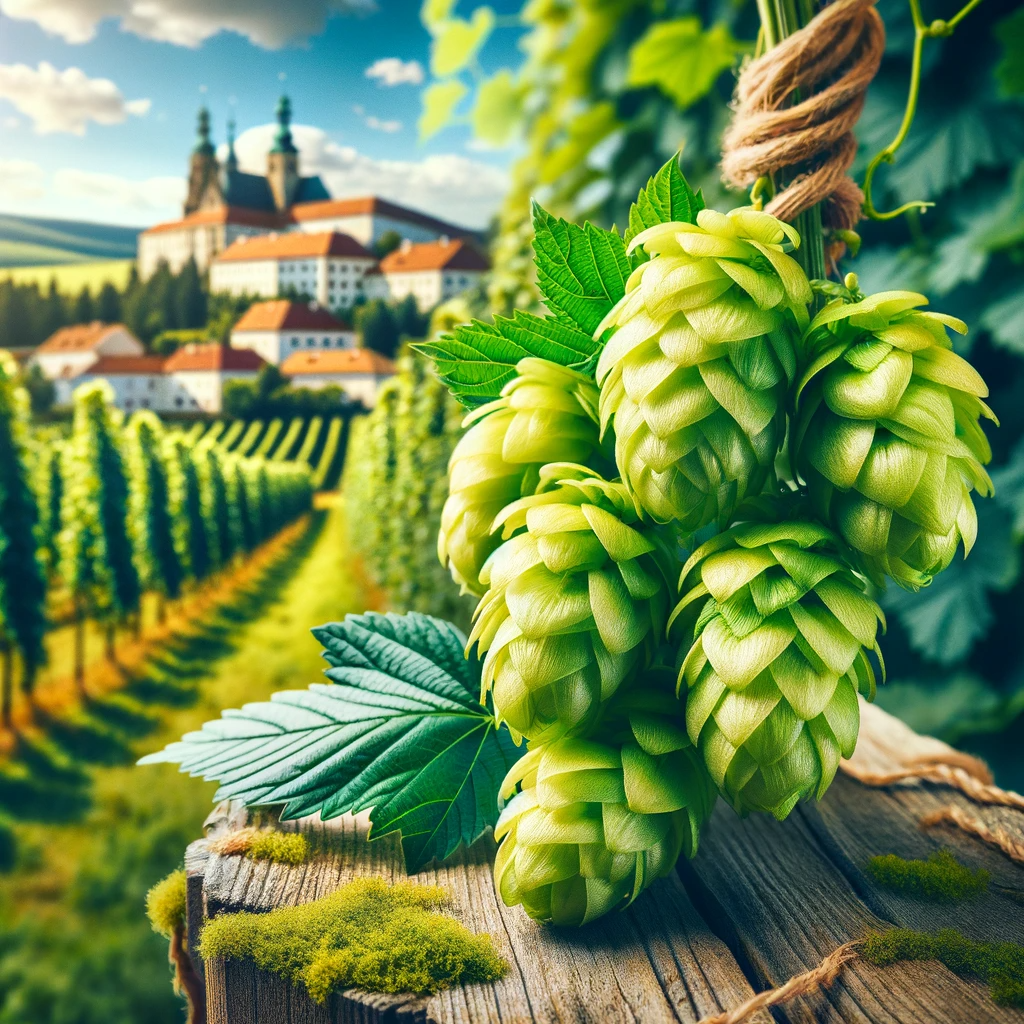|
Wednesday, July 10 2024
Crystal HopsCrystal hops, known for their versatility and unique aromatic profile, are a popular choice among both craft brewers and homebrewers. Developed as a part of a breeding program to replace the German noble hop Hallertauer Mittelfrüh, Crystal hops offer a delightful blend of both European and American hop characteristics. Origin and CharacteristicsCrystal hops were introduced by the USDA in 1993, following a breeding program that began in 1983. They are a triploid hop variety with parentage that includes Cascade, Brewer’s Gold, and Early Green hops. This lineage provides Crystal hops with a unique profile that combines floral, woody, and citrusy notes Flavor and AromaCrystal hops are valued for their delicate yet complex aroma, which includes elements of spice, floral, and fruity notes. Common descriptors include cinnamon, pepper, nutmeg, pine, and citrus (such as lime, orange peel, and lemongrass). When used in larger quantities, they can impart more robust citrus and spice Usage in BrewingCrystal hops are predominantly used as an aroma hop due to their low alpha acid content, typically ranging from 3.5% to 5.5%. This makes them ideal for late boil additions and dry hopping, where their aromatic properties can be fully appreciated without contributing significant bitterness. They are versatile enough to be used in a wide range of beer styles including:
Substitutes and PairingsIf Crystal hops are unavailable, they can be substituted with other noble or semi-noble hops such as Hallertau Mittelfrüh, Mt. Hood, or Liberty. These substitutes share similar aromatic properties, ensuring the desired flavor profile is maintained (MoreBeer). Crystal hops also pair well with a variety of other hops, including Centennial, Simcoe, and Chinook, which can enhance their inherent floral and citrus characteristics Commercial ExamplesMany breweries utilize Crystal hops in their recipes to achieve distinctive flavors. Some notable beers featuring Crystal hops include Wildflower Wheat from Marble Brewing Company and Crystal Hero from Revolution Brewing Company Growing Crystal HopsFor homebrewers interested in growing their own, Crystal hops are relatively easy to cultivate. They thrive in well-draining soil with adequate watering and partial sun exposure. This makes them an attractive option for home gardens, provided there is enough space for their extensive growth (Beertannica). In summary, Crystal hops are a versatile and aromatic hop variety that can enhance a wide range of beer styles. Their unique blend of floral, citrus, and spicy notes makes them a valuable addition to any brewer's toolkit. Wednesday, January 24 2024
Cascade Hop Flavor & ProfileCascade hops, a beloved variety in the craft beer industry, are known for their distinctive profile and history. Developed in the 1960s, Cascade was released in the early 1970s and is named after the Cascade Range in the western United States. This hop variety is a crossbreed of the English Fuggle and Russian Serebrianka hop varieties. It's particularly popular in American Pale Ales and is also used in a variety of ales and lagers. The Cascade hop is characterized by its unique blend of flavors and aromas. Commonly, it imparts floral, citrus, and grapefruit notes, with occasional hints of pine and spice. This versatility makes it a favorite for adding both aromatic and bittering qualities to beers. It's known for its spicy citrus aroma with grapefruit elements, contributing to a bright and refreshing flavor profile in beers. In terms of technical specifications, Cascade hops have an alpha acid composition of 4.5%-8.9%, and a beta acid composition of 3.6%-7.5%. The oil composition includes significant levels of myrcene (45%-60%), which contributes to its citrusy aroma. Cascade hops are also described as having moderate to high growth rates with yields ranging from 1800-2200 lbs/acre. Cascade hops have a moderate to poor storage stability, but this is often not an issue due to their high demand and large production volumes. They are suited for a wide range of beer styles, including but not limited to Barley Wines, American Pale Ales, and lagers. Overall, the Cascade hop is a cornerstone of the American craft beer movement, offering a unique and versatile profile that has made it a staple in many breweries. PNW vs NY Cascade Hop Profile / FlavorThe terroir, or the environmental factors where hops are grown, can significantly influence the characteristics of Cascade hops. While the specific details about the differences in terroir between the Pacific Northwest (PNW) and New York (NY) for Cascade hops are not extensively documented, some general observations can be made. Cascade hops from the PNW, where they were originally developed and are extensively grown, are known for their distinctive spicy citrus aroma with hints of grapefruit. This is attributed to the unique climate and soil conditions in the region. The PNW is renowned for its hop production, thanks to its optimal growing conditions for hops. In contrast, Cascade hops grown in New York may exhibit a different profile due to the distinct terroir of the region. The climate, soil composition, and other environmental factors in New York are different from those in the PNW, which can lead to variations in the hop characteristics. For instance, New York's Cascade hops are described as having aromas of orange, grapefruit, Dew Berry, and stone fruits, suggesting a possibly more diverse flavor profile influenced by the local growing conditions. It's important to note that while terroir can influence hop characteristics, the overall genetic makeup of the hop variety remains the same. Therefore, Cascade hops, regardless of where they are grown, will share certain fundamental traits, but the nuances in flavor and aroma can vary based on the terroir. This concept is similar to how wine grapes of the same variety can produce different tasting wines when grown in different regions. These differences highlight the importance of considering both the hop variety and the region where it is grown when crafting beer, as each can contribute unique qualities to the final product. NY Cascade Hops can be purchased here at upstatehops.net, just follow our link to our NY Cascade Hops. Friday, January 19 2024
"Super Saaz" hops, as the name suggests, are an enhanced variant of the traditional and highly esteemed Saaz hops, known for their noble characteristics and extensive use in classic beer styles like Pilsners. These hops offer a rich, aromatic profile that has been favored in brewing for centuries. Origin and DevelopmentSuper Saaz hops stem from the same lineage as the classic Saaz variety, which originated in the Czech Republic. This region is renowned for its long-standing tradition in hop cultivation and brewing. The development of Super Saaz hops is rooted in the desire to amplify the best qualities of Saaz while potentially offering increased versatility or different agronomic characteristics. Super Saaz distinguishes itself with higher alpha acid content (6.27% compared to 3.40% in Czech Saaz), giving it an "Alpha Kick." It also features a beta acid content of 6.98% and total oil content of 1. CharacteristicsSuper Saaz hops maintain the earthy, herbal, and spicy aromas that are hallmarks of their predecessor, the Saaz hops. However, they may offer a more pronounced intensity in these attributes or differ slightly in their oil composition and acid profile. The exact differences can vary based on growing conditions and cultivation practices. Brewing ApplicationsThe enhanced characteristics of Super Saaz hops make them suitable for a variety of beer styles. They are particularly well-suited for:
Unique AspectsWhat sets Super Saaz hops apart is their ability to bring a familiar, yet distinct, hop character to a brew. They offer a bridge between traditional brewing and modern craft innovations, allowing brewers to experiment while staying rooted in classic hop flavors. Super Saaz Hops can be purchased at https"//www.upstatehops.net at this page. https://upstatehops.net/inc/sdetail/super-saaz---saaz-72--t-90-hop-pellets-/649/850 Wednesday, January 17 2024
Vista hopsOrigin and Development: The origin and development of Vista hops involves a process of selective breeding and cultivation. Typically, new hop varieties like Vista are developed through extensive research and experimentation in hop breeding programs. These programs aim to combine desirable traits from existing hop varieties to create new ones with unique flavor profiles, disease resistance, and growing characteristics. The development of a hop variety like Vista is a meticulous process that can take several years, involving cross-breeding, field trials, and sensory evaluations to ensure they meet the desired criteria for aroma, flavor, and brewing performance. Vista hops, with their specific flavor profile, are a result of such dedicated efforts in hop cultivation and breeding. Vista hops were developed by the USDA’s public hop breeding program and were officially announced as a new variety in 2022. They were originally known as USDA Experimental #074 and were bred in 2006 at the USDA’s Agricultural Research Station in Corvallis, Oregon. Vista hops are a result of a cross by Dr. John Henning between the tetraploid Perle female and an unknown diploid male, resulting in a triploid line recognized for its vigorous plant growth and superior agronomic traits. The ancestry of Vista hops includes Perle, Northern Brewer, and Hallertauer. Flavor and Aroma Profile: The flavor and aroma profile of Vista hops is characterized by a unique and appealing blend of notes that make it versatile for brewing various styles of beer. Key characteristics of Vista hops include:
Brewing Applications: The brewing applications of Vista hops are diverse, making them a versatile ingredient in the brewing industry. Given their unique flavor and aroma profile, they are particularly well-suited for certain styles of beer and specific brewing roles. Here are some key applications:
Vista hops offer brewers a wide range of possibilities, from enhancing traditional beer styles with a modern twist to experimenting with new brewing techniques and hop combinations. Their adaptability and distinctive flavor profile make them a valuable ingredient in the craft brewing world. Vista hops are more than just a new ingredient; they represent the evolving landscape of craft brewing. Their unique profile offers exciting possibilities for both brewers and beer enthusiasts. Vista Hops can be purchased here at upstatehops.net, just follow our link to Vista Hops. https://upstatehops.net/inc/sdetail/vista--t-90-hop-pellets-/649/1319 Tuesday, January 16 2024
Today we're diving into the exciting world of New York-grown hops! New York State, with its rich agricultural heritage, is rapidly becoming a hotspot for high-quality, locally-grown hops. This resurgence is not only a nod to the state's historical roots in hop farming but also a boost to the local craft brewing industry.
NY-grown hops are more than just an ingredient; they're a testament to the state's agricultural prowess and a key component in the craft beer revolution. Whether you're a brewer or a beer aficionado, NY hops are bringing something fresh and exciting to the table. Stay tuned to our blog for more insights into the fascinating world of hops and brewing. And if you're looking to try some NY-grown hops or want to know more about them, visit www.upstatehops.net for a wide selection and more information. Cheers to great beer! |



